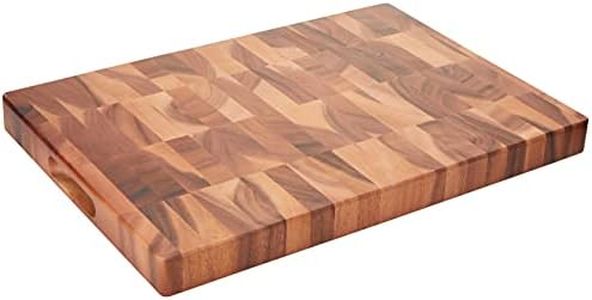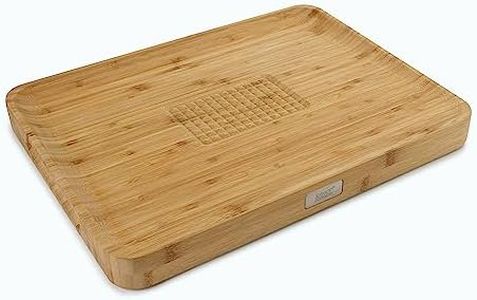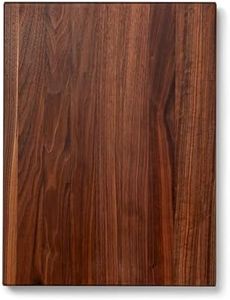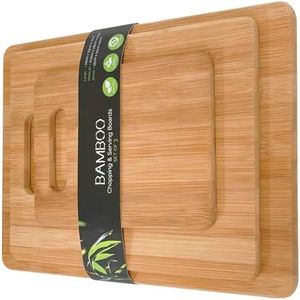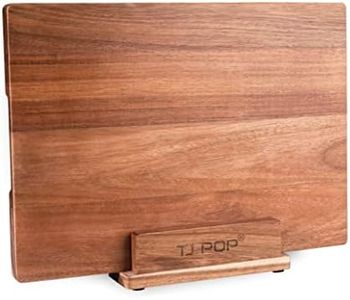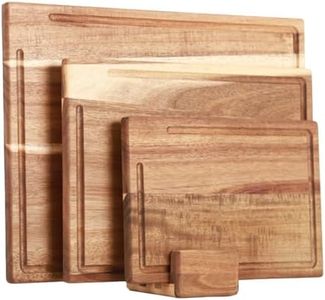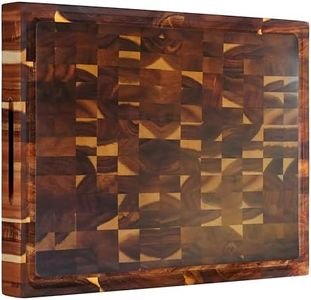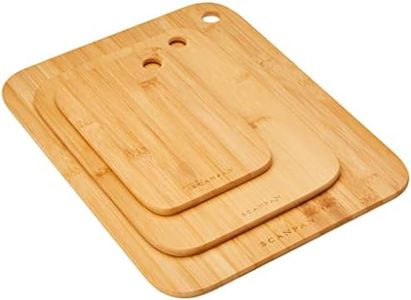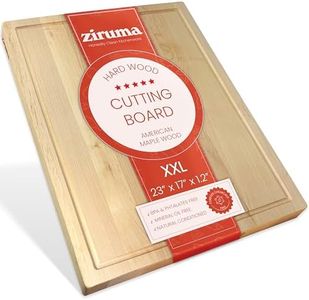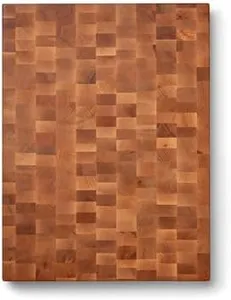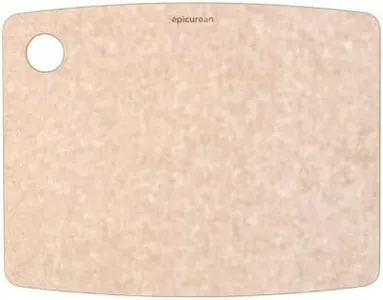We Use CookiesWe use cookies to enhance the security, performance,
functionality and for analytical and promotional activities. By continuing to browse this site you
are agreeing to our privacy policy
10 Best Wood Cutting Boards
From leading brands and best sellers available on the web.Buying Guide for the Best Wood Cutting Boards
Choosing the right wood cutting board is important for both your kitchen experience and food safety. A good cutting board makes food prep easier, keeps your knives sharper for longer, and adds style to your kitchen. It’s essential to think about how often you cook, what type of foods you typically prepare, and how much maintenance you are willing to do. Looking at the specific features will help you find a board that fits your habits and lasts for years.Wood TypeWood cutting boards are most commonly made from hardwoods, such as maple, walnut, cherry, or bamboo. The type of wood affects durability, knife friendliness, and even appearance. Hardwoods like maple and walnut are gentle on knives and quite durable, while bamboo is usually tougher and less porous, which can make caring for it a bit different. If you want a long-lasting, easy-to-care-for board, stick with maple or walnut. Cherry offers a unique color and works well, but shows cuts more easily. Consider what look you prefer and how much care you want to provide—the more porous or soft the wood, the more attention it needs.
Grain OrientationThe grain orientation of a cutting board refers to how the wood fibers are arranged. There are three main types: end grain, edge grain, and face grain. End grain boards show the ends of the wood fibers on the cutting surface and are the most gentle on knives—they self-heal from cuts and last longer. Edge grain boards are made by arranging the boards side by side, making them durable and usually more affordable, but they may show knife marks faster. Face grain boards are less common for cutting, as they show wear more quickly. If you chop a lot, or want the longest-lasting and most knife-friendly surface, choose end grain. If you want something sturdy for daily use without as much expense, edge grain is a good fit.
Size and ThicknessCutting boards come in a range of sizes and thicknesses. Larger boards give you more space to work, which is helpful if you prepare many ingredients at once or work with big pieces of meat. Smaller boards are easier to store and clean, and suit small kitchens or light prep work. Thickness also matters: thicker boards (around 1.5 inches or more) tend to be sturdier, resist warping, and move less on the counter, whereas thinner boards are lighter and easier to handle but can warp more easily and may be less durable over time. Think about how much space you have, how you like to cook, and what foods you prepare most—pick a board size and thickness that matches your style.
Maintenance RequirementsWood cutting boards need regular care to stay in good condition. They usually require periodic oiling with food-safe mineral oil to prevent drying and cracking, and must be hand-washed (never put them in the dishwasher). Some woods and grains need more frequent maintenance, especially end grain and softer woods. If you prefer low-maintenance kitchen tools, look for harder woods and edge grain construction, which are easier to keep up. If you enjoy kitchen care routines and long-lasting beauty, more delicate woods or end grain boards are an enjoyable option.
Anti-Slip FeaturesSome cutting boards come with feet or grips to keep them from sliding during use. This feature adds safety and comfort, especially when working with heavy chopping or slick foods. Boards without anti-slip features can be placed on a damp towel for stability, but if you want a ready-to-use and steady surface, opt for built-in grips or rubber feet. Consider how often you chop tough items and if you want that extra security built in.
Juice GrooveA juice groove is a channel carved around the edge of some cutting boards to catch liquids from fruits, vegetables, or meat. This keeps your counter cleaner and is particularly useful if you often carve roasts or juicy produce. While it’s not a must for everyone, consider a juice groove if you prep a lot of moist foods or want less mess during food prep.
